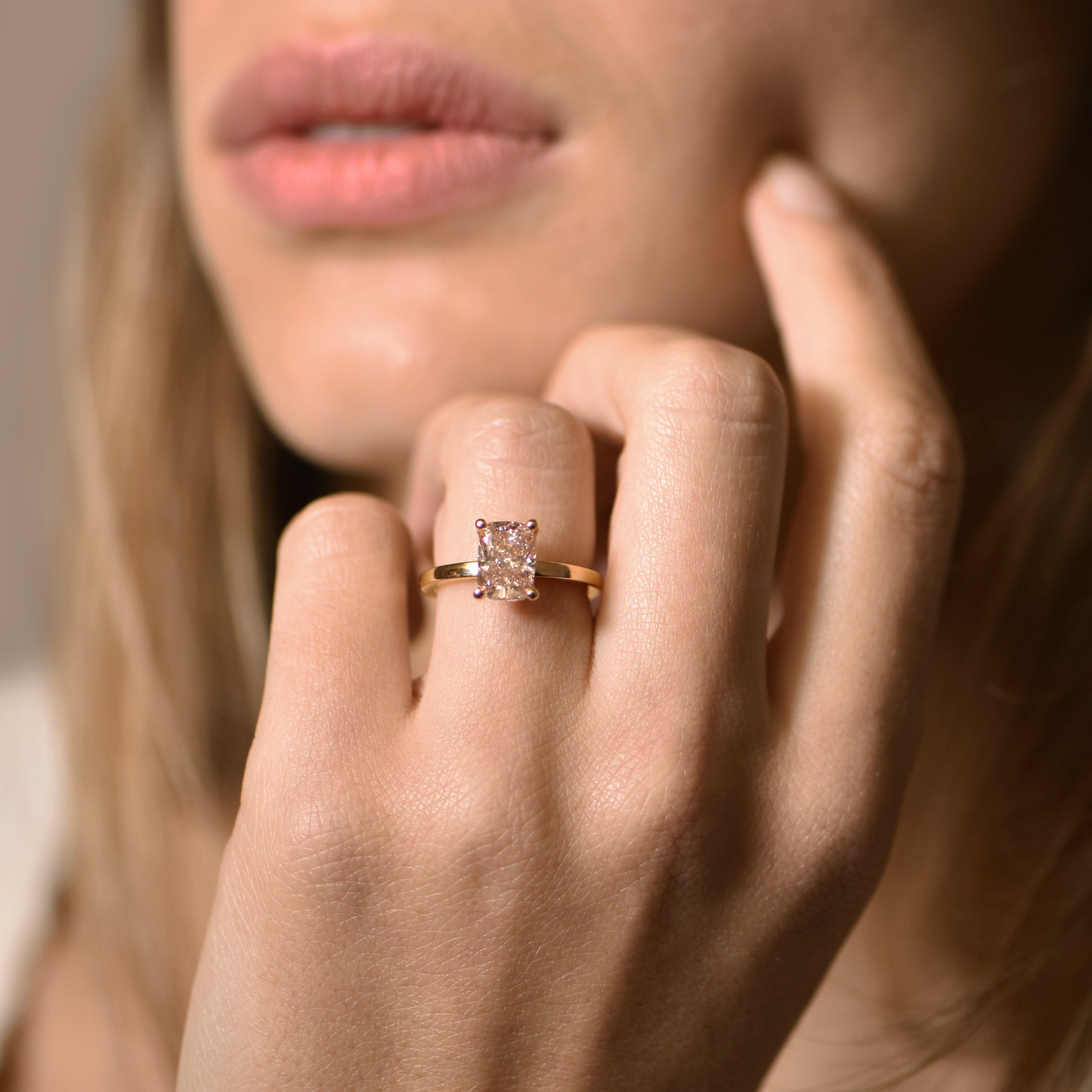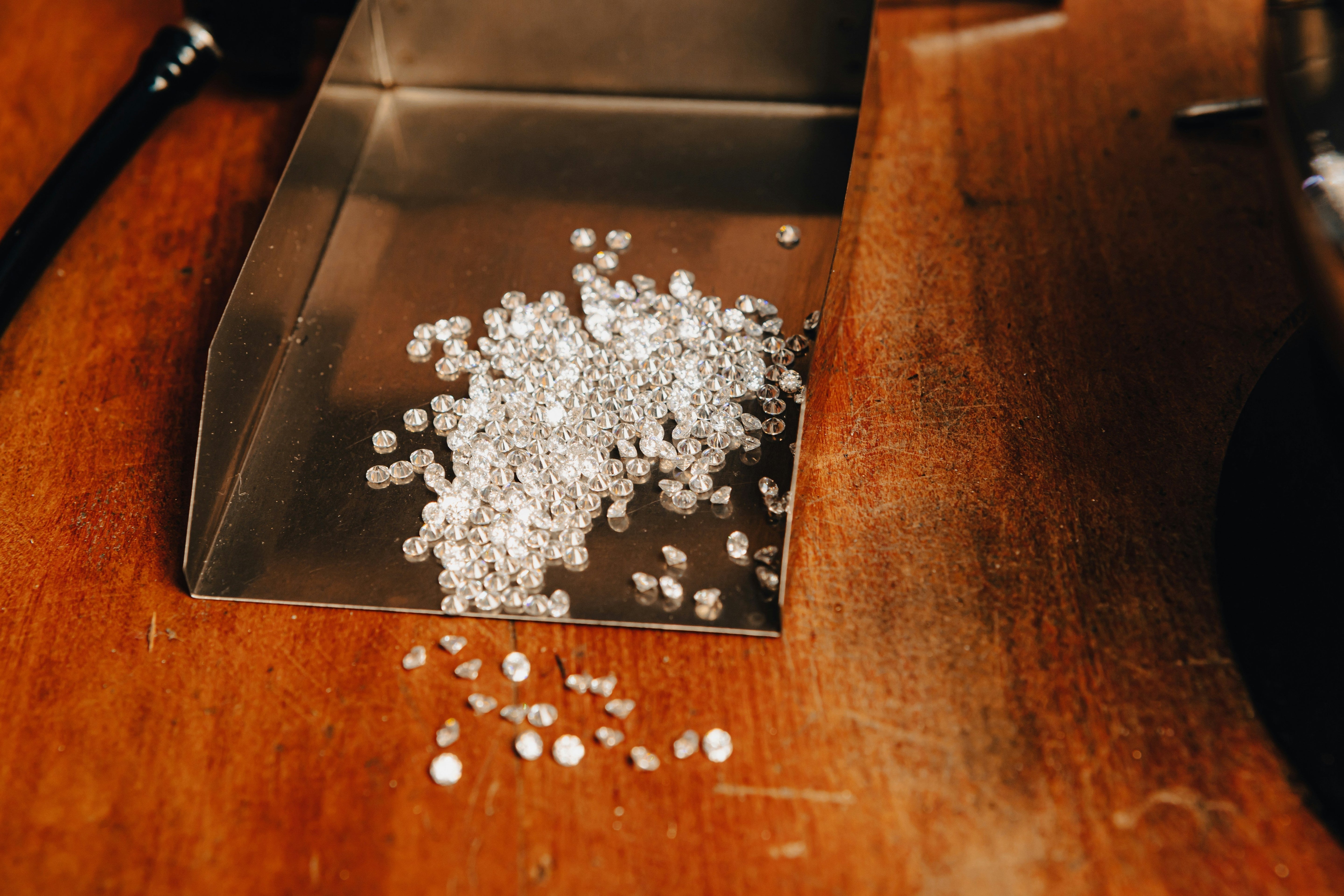For several years now, the mining stone sector has been experiencing an unprecedented crisis, shaken by the historic collapse of its prices and the meteoric rise of lab-grown diamonds. In 2023, the total value of rough diamonds mined worldwide fell by 20%, dropping to around $12.7 billion, a historic low. This trend is confirmed at De Beers, whose revenue from rough diamond sales fell by 21% in the first half of 2024 (Mining Technology, 2024), signaling a structural depreciation of natural diamonds on the global market. This dual dynamic reveals a profound questioning of an economic model based on manufactured scarcity and speculation, which is now faced with a more transparent, ethical, and accessible alternative.
Faced with this structural change, diamond dealers and major institutions in the sector seem to be closing ranks in a form of mutual protection, orchestrating increasingly comical, sometimes even confusing strategies to saturate the media space and cloud the market's visibility. This confusion is not insignificant: it is part of an effort to control the narrative, in which lab-grown diamonds are alternately trivialized, ridiculed, or reduced to a derivative product, in the hope of preserving the aura of mining.
In this analysis, we examine two specific cases that shed light on these symbolic and economic defense mechanisms. These two recent initiatives, far from being anecdotal, reflect the deep tensions that are shaking the diamond industry. By examining them, it becomes possible to better understand the underlying issues and to glimpse why it has become essential to deconstruct the marketing mechanisms that surround these stones, in order to reveal the truth behind the rhetoric.
AWDC and the trivialization of lab-grown diamonds: a patronizing strategy
The initiative recently launched by the Antwerp World Diamond Center (AWDC), in the form of a two-day marketing campaign on the streets of Antwerp, consists of distributing lab-grown diamonds via a ball machine for the symbolic sum of five euros. This operation, which appears playful, actually reveals a deeply devaluing communication strategy. By associating diamonds with a cheap and childish object, the AWDC is attempting to strip these stones of their symbolic value, traditionally linked to exclusivity, prestige, and rarity.
This carefully orchestrated trivialization is not simply aimed at attracting a new audience, but at thoroughly delegitimizing lab-grown diamonds. Behind the apparent lightheartedness of the device lies a logic of maintaining the symbolic hierarchies of the sector, where mined diamonds continue to embody authenticity, relegating cultured diamonds to an accessory, almost playful, even anecdotal status. The ball machine thus becomes the emblem of ideological resistance: it reinforces the cultural hegemony of mining by downgrading the synthetic alternative.
The proposed price of five euros can be explained by the probable use of very small laboratory-grown stones or stones of inferior quality on the 4Cs scale, which further accentuates the trivialization of diamonds. However, it is important to note that a mined diamond of the same quality also sells at a similar price. This fact reminds us that low prices are not specific to synthetic stones, but rather a direct consequence of the quality offered, regardless of origin.
This campaign is all the more significant because it is being promoted by Rapaport, a central institution in the diamond market known for its influence on pricing and regulation in the sector. As a player historically aligned with the interests of the traditional industry, Rapaport is participating in an effort to reinforce the symbolic and economic boundaries between mined diamonds and lab-grown diamonds. Like the Gemological Institute of America (GIA), these major entities are playing a decisive role in this silent cold war between two visions of luxury: one based on geological rarity and the other on technological innovation. Their power to legitimize or disqualify only reinforces the power dynamics at work in this silent reconfiguration of the jewelry market.
When the GIA rewrites the rules: strategy, pressure, and performance around lab-grown diamonds
In a move that is as strategic as it is symbolic, the Gemological Institute of America (GIA), a global authority in gemology since its founding in 1931, has announced that it will abandon the famous 4Cs (cut, color, clarity, carat) for evaluating lab-grown diamonds. From the end of 2025, these will no longer be accompanied by detailed technical certificates, but will be classified according to simplified categories such as “premium” or “standard,” or even left unmentioned if their quality is deemed insufficient. Officially, the GIA justifies this decision by citing the excessive standardization of synthetic diamonds, which are mass-produced within a narrow range of characteristics. Unofficially, this radical break with a now universal evaluation system betrays growing pressure from traditional diamond dealers and major jewelry houses, anxious to restore the symbolic and commercial supremacy of natural stones.
This decision by the GIA is not insignificant. The institute, historically responsible for maintaining public confidence in gemstones, is now taking sides in a silent war between two regimes of legitimacy: that of the millennial geological miracle and that of reproducible technological innovation. But it also reveals, in contrast, a phenomenon of performativity: for more than a decade, the 4Cs have been applied to both diamonds mined from the ground and those produced in laboratories, reinforcing the idea that these two objects could be evaluated, and therefore perceived, in an equivalent manner. The fact that this break comes at a time when the diamond market is experiencing a sharp slowdown raises questions. This reconfiguration of standards seems to aim to reposition lab-grown diamonds as a distinct, even complementary, offering in an attempt to revive a saturated market. By changing the criteria, we also change perceptions, and therefore value. The GIA, with its quasi-sacred authority in the sector, does not merely observe: it acts, it institutes, and in doing so, it reconfigures the lines of power in contemporary jewelry.
A war of legitimacy rather than nature
At the end of this analysis, one truth stands out: there is no material or aesthetic difference between diamonds mined from the ground and those grown in a laboratory. They have the same chemical composition, the same crystal structure, and the same brilliance. Yet, an entire system of power is working to construct and then artificially maintain a symbolic boundary between these two realities. Laboratory-grown diamonds, although identical in nature, remain excluded from the restricted circle of jewelry legitimacy.
This rejection is embodied in institutional decisions with profound implications. This rejection is manifested through institutional decisions with profound implications. For example, lab-grown diamonds remain excluded from many international gemology shows and conventions, which reserve their space solely for stones extracted from mines. Such exclusion is not based on scientific criteria, but on issues of image, economic power, and control of the dominant narrative. The aim is to contain a threat: that of an upheaval in the established order of a market historically built on the idea of controlled scarcity and unattainable luxury.
However, this fierce defense of natural diamonds obscures an entire aspect of their reality: the social and environmental shadow that accompanies them. Despite campaigns promoting “ethical diamonds,” the mining industry remains associated with conflict zones, forced and child labor, massive deforestation, groundwater pollution, and the dispossession of local communities from their land. Behind the sparkle of the stone, opaque supply chains continue to have devastating effects, often invisible to the end customer.
In contrast, lab-grown diamonds, which are traceable and produced under controlled conditions without destructive mining, represent an alternative that many prefer to silence, unable to discredit it scientifically.
The industry's numerous attempts to maintain a symbolic barrier between mined and lab-grown diamonds (exclusion from trade shows, biased narratives, marketing devaluation) have not really slowed the rise of lab-grown diamonds. Yet these strategies persist. One example is Lightbox: a brand launched by De Beers to sell low-cost lab-grown diamonds, while continuing to reserve prestige for its mined diamonds. This ambiguous positioning, designed to confine lab-grown stones to a range perceived as inferior, has failed to convince the market. In reality, the project was doomed to fail from the outset: it sought to undermine the image of lab-grown diamonds while consolidating that of mined stones. But this tactical maneuver was not enough to halt a transformation that was already underway. Cultured diamonds, driven by a demand for transparency and increased environmental awareness, are now imposing their own narrative.
Because what is really being fought here is not a product, but a paradigm shift. What is disturbing is a narrative in which value is no longer based on a mythical earthly origin, but on radical transparency that upsets the historical balance of luxury.
AGUAdeORO is a jewelry store founded in 2009, with locations in Geneva and Zurich. It offers its customers the opportunity to purchase ethical jewelry made in Switzerland. We are committed to offering jewelry that combines sustainability and elegance.
(Photo credit: Photo by Lucas Santos on Unsplash)
Read more

A symbol of love and transmission, gold has always fascinated. But did you know that its purity varies according to culture and use? Too malleable for everyday wear, 24-carat gold is rarely used in...

Le prix de l’or dépasse désormais 100’000 CHF/kg (doublé en deux ans), freinant l’achat et compressant les marges. Les bijouteries s’adaptent en optimisant modèles, matières et logistique pour rest...


